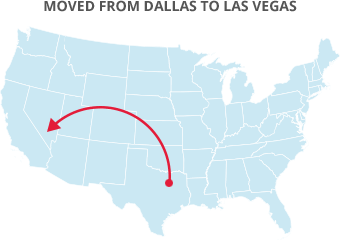

 There is something about a big stack of boxes and rolls of packing tape that is invigorating—here is your chance to go through all your possessions and carefully box your prized possessions, so when you arrive at your new residence and begin unpacking the boxes it will feel just like Christmas morning when you were a kiddo. Pretend for a few seconds that's how the entire scenario actually develops, and you're not running through the house like a loon tossing heirloom china in with the bowling balls, make sure you've got the correct packing supplies for your moving task.
There is something about a big stack of boxes and rolls of packing tape that is invigorating—here is your chance to go through all your possessions and carefully box your prized possessions, so when you arrive at your new residence and begin unpacking the boxes it will feel just like Christmas morning when you were a kiddo. Pretend for a few seconds that's how the entire scenario actually develops, and you're not running through the house like a loon tossing heirloom china in with the bowling balls, make sure you've got the correct packing supplies for your moving task.
Boxes and tape are a few of the most vital equipment for packing, but all boxes and tape are NOT of the same quality. It is acceptable to put random coffee mugs in an old toaster box and put it on the top shelf of the pantry, but to pack, stack, and move that box, it will collapse like a house of cards and you will wind up with a lot of broken mugs.
If you're packing yourself, conduct some research into the materials before you get started. If you're employing a moving company to execute the actual moving, they will most likely have the right heavy-duty boxes, tape, and wrapping stuff you will want to use. If not, storage facilities, big box stores, and the internet are acceptable places to get your supplies, but since you cannot do tactile research online, don't rely on reviews to make your decision—everyone packs differently and "sturdy" and "solid" are highly subjective terms.
Find boxes that are corrugated--a layer of wavy fiber between the inner and outer layers of heavy cardboard. The corrugation gives the box structure and stability, so when you load them on the moving van they don't crumple. There are varying amounts of toughness within the corrugated realm, so you may get the box strength you need for a given item--go with the most rugged boxes for the most delicate and the bulkiest items you will pack.
While you are buying boxes, make sure and get plenty of the small ones--heavy items go in small boxes, bulky lightweight items go in the larger boxes. For instance, books weigh quite a bit and should go in a small box. Blankets and throw pillows are comparatively light and can be placed in the larger ones.
Purchasing inexpensive, low quality tape is where a lot of DIY packers get frustrated. If it is low-quality, it won't adhere well. Worse, it will stick to itself coming out of the gun and splinter in small little pieces and then you have to work at it and aim to get it to unstick in a single piece. Be extravagant and purchase a good-quality tape gun or two with a padded handle—you'll be pleased you did when you're seventy-five boxes in with a ninety more to go. It's also a brilliant idea to get your tape in bulk--it costs less and you can normally return what you might not use.
 There are lots of options for padding inside the boxes. Old towels and blankets are amazing when you need something lining the box, like when you're packing shoes and don't want them banging around.
There are lots of options for padding inside the boxes. Old towels and blankets are amazing when you need something lining the box, like when you're packing shoes and don't want them banging around.
Newsprint is definitely the best option for pretty much everything--from wrapping mugs (thread a twisted end through the handle and stick the leftover inside after it is wrapped) to books to kitchen items.
Bubble wrap can get pricey, but buy the good stuff anyway, since that is what you'll use it for. The bubble size varies, but a fair guideline is for your bubble size to match the item size—keep the big bubbles for padding around the entire box. Feel the wrap prior to purchasing it, and observe how strong it is when you squeeze and pull it. If it is not strong or does not like the bubbles hold, try a different brand.
If you have not moved in a while, and you go hunting for boxes, be ready to be amazed at the choices you have. When your parents moved, they got their tape and boxes and had the whole neighborhood retaining newspapers for months. Currently, there are bunches of specialty moving supplies you'll see when you go shopping—several are really worth the extra money, some are not—it's up to you to discern what is going to be best for your move. Again, be positive you are getting decent quality--you don't need your mattresses in unsubstantial plastic sheeting.
Now that you've got the boxes under control, make a plan for how you are going to move the heavy things out the door--the dressers, the lawn mower, the grill--but don't be anxious, help is on the way. For moving a few of these items renting equipment is the easiest way to go.
Your furniture is more susceptible to damage than you probably realize--surface dings and scrapes are overall very common when things come off the truck. You can sidestep these issues with some simple protection; again, make sure you are obtaining acceptable quality materials that hold up to the rigors of moving.
The last supplies you'll need are for the big time heavy and bulky stuff. Unless you have these items already, it would be best.
Whatever method you are moving your household, your local moving company will be able to provide you with all of the speciality items you'll require to move. Just don’t forget that you're packing your entire life in these boxes, so be sure that your moving supplies are acceptable to handle the task.

